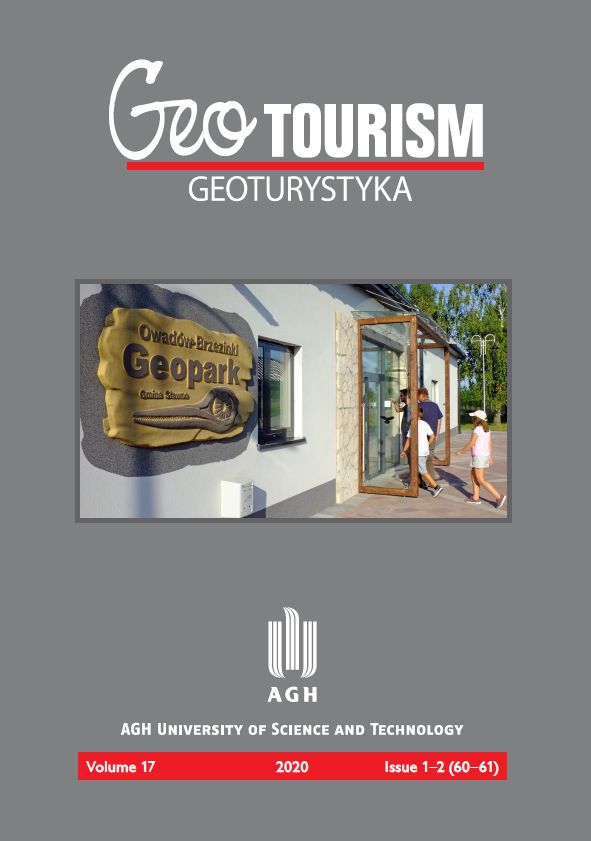The geotouristic attractiveness of the underground trails in Zabrze, Dąbrowa Górnicza and Tarnowskie Góry towns (Silesian Upland)
DOI:
https://doi.org/10.7494/geotour.2020.1-2(60-61).23Abstrakt
In Zabrze, Dąbrowa Górnicza and Tarnowskie Góry towns, seven underground tourist trails are located in historical mines. Four of them were developed in the central part of the Upper Silesian Coal Basin, two of which, at the “Królowa Luiza” (“Queen Louise”) Adit (comprising the former coal mine “Królowa Luiza” and the drainage Main Key Hereditary Adit remnant), and two others at the “Guido” Mine in Zabrze town. The next one was developed in the eastern part of the Upper Silesian Coal Basin, in a part of the “Sztygarka” Training Coal Mine in Dąbrowa Górnicza. Two other trails are located in Tarnowskie Góry town, in the border zone between the Upper Silesian Coal Basin and the Silesian-Kraków Monocline. These are the relics of the historical lead, zinc and silver ore mine, and the “Czarny Pstrąg” (“Black Trout”) drainage adit. The bituminous coal deposits are hosted in the Upper Carboniferous clastic formations, which fills the Upper Silesian Coal Basin. The metal ores are hosted in Middle Triassic dolomites, which belong to the southern margin of the Silesian-Kraków Monocline. The geotourism attractiveness of all these historical mines was demonstrated by selected annual statistical data of tourist attendance. In general, the interest in these facilities has been growing since decades, same as the popularity of industrial heritage in the Upper Silesia. These three towns have become very widely known in Poland and in the world.
Pobrania
Pobrania
Opublikowane
Numer
Dział
Licencja

Praca jest udostępniana na licencji Creative Commons Attribution 3.0 Unported License.

Ten utwór jest dostępny na licencji Creative Commons Uznanie autorstwa 3.0 Unported.


